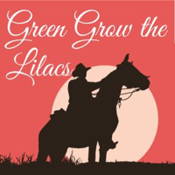
Overview
Synopsis
Oklahoma! is firmly etched into the American musical theatre canon. Somewhat less known is the musical’s original basis: Lynn Riggs’ play with music Green Grow the Lilacs. Named after the Irish folk song, the play features the same characters and largely the same plot as the musical. Set in Indian Territory (now Oklahoma) in 1900, Green Grow the Lilacs revolves around 18-year-old Laurey Williams and her two rival suitors: handsome cowboy Curly McClain and the growly ranch hand Jeeter Fry. The play’s structure is unique in that it is a one-act play with six scenes, some of which happen at the same time as the events of the previous scene. There are also musical interludes between scenes and the insertion of folk songs throughout (the folk songs were replaced by original songs in the musical). As a one-act, the play’s characters are less fully defined than they would become in Oklahoma!, but the templates are very much evident in this piece of theatre history.
Show Information
Context
In 1928, American playwright Lynn Riggs received a Guggenheim Fellowship, a grant that allowed him to travel to France. It was there that he wrote Green Grow the Lilacs, a play with music named after the Irish folk song that was popular in the United States at the time. After previews at the National Theatre in Washington, D.C., the play opened on Broadway at the Guild Theatre (now the August Wilson Theatre) on January 26, 1931. Popular leading man Franchot Tone played the handsome singing
to read the context for Green Grow the Lilacs and to unlock other amazing theatre resources!Plot
1 In the front room of a farmhouse in Indian Territory one summer morning, handsome cowboy Curly McClain sings a folk song romanticizing the life of a cowboy. Aunt Eller, the play’s mother figure, playfully teases and flirts with him. Curly coyly asks about Eller’s niece, 18-year-old Laurey. He intends to ask her to a party being hosted by Old Man Peck, but before he can ask she (somewhat playfully) rebuffs him. Eller tells a sullen Curly that Laurey likes him, but that her burly ranch hand
to read the plot for Green Grow the Lilacs and to unlock other amazing theatre resources!Characters
| Name | Part Size | Gender | Vocal Part |
|---|---|---|---|
|
Lead |
Male |
|
|
|
Lead |
Female |
|
|
|
Supporting |
Female |
|
|
|
Supporting |
Male |
|
|
|
Featured |
Male |
|
|
|
Featured |
Male |
|
|
|
Featured |
Male |
|
|
|
Featured |
Either Gender |
|
|
|
Ensemble |
Female |
|
Songs
A song with an asterisk (*) before the title indicates a dance number; a character listed in a song with an asterisk (*) by the character's name indicates that the character exclusively serves as a dancer in this song, which is sung by other characters.
Monologues
Scenes
Key Terms
A musical with a well-structured narrative that integrates songs, dialogue, and dance to advance plot and character development.
A group of performers who function as a unit in a production rather than as individuals with leading roles.
Traditional music that tells stories of everyday life and struggles, frequently featured in historical and cultural dramas.
A short performance between acts or scenes, often offering comic relief or thematic commentary in dramatic structure.
A dramatic work that includes incidental music or songs, but is not classified as a full musical. Music supports mood and storytelling without dominating the narrative.
A working-class character on a ranch, used in Western or realist theatre to explore labor, masculinity, and independence.
A nasal vocal quality or accent, often used in acting to portray regional characters or comedic exaggeration.
Videos
Quizzes
Themes, Symbols & Motifs
Sorry! We do not currently have learning modules for this guide.
Quote Analysis
Sorry! We do not currently have learning modules for this guide.
